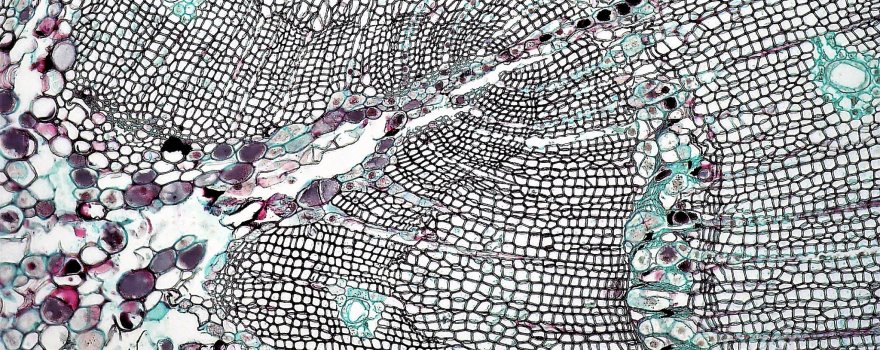
In science news this week: Climate Change and Competition Reduce Freshwater Rearing in Salmon; Creating a legacy for South Sacramento: Habitat conservation plan balances urban growth with open space; DWR Awarded Prop 1 Grant to Study Removal Methods of Highly-Invasive Plant in Suisun Marsh; A special weir for special fish; Pulse Flows Expected to Boost Brown Trout Fishery in Owens River Gorge; New Marine Heatwave Emerges off West Coast, Resembles “the Blob”; Satellite Data Record Shows Climate Change’s Impact on Fires; Building water-efficient cities; and more …
 Climate Change and Competition Reduce Freshwater Rearing in Salmon: “Research has shown that salmon, and indeed all organisms with complex life cycles that involve migration, are particularly sensitive to the effects of climate change, such as rising temperatures, fluctuating river flows, and changing ocean conditions. Many studies have focused on how these changes impact specific life stages, like juveniles or adults, but less on how these impacts translate from one life stage to the next. For example, if a trait like the amount of time a juvenile salmon spends in freshwater changes, how will this affect its subsequent maturation to adulthood in the ocean? Salmon fisheries often keep extensive records dating back many decades, so they provide an excellent model to investigate the impacts of a changing climate across each stage of a fish’s complex life cycle. … ” Read more from FishBio here: Climate Change and Competition Reduce Freshwater Rearing in Salmon
Climate Change and Competition Reduce Freshwater Rearing in Salmon: “Research has shown that salmon, and indeed all organisms with complex life cycles that involve migration, are particularly sensitive to the effects of climate change, such as rising temperatures, fluctuating river flows, and changing ocean conditions. Many studies have focused on how these changes impact specific life stages, like juveniles or adults, but less on how these impacts translate from one life stage to the next. For example, if a trait like the amount of time a juvenile salmon spends in freshwater changes, how will this affect its subsequent maturation to adulthood in the ocean? Salmon fisheries often keep extensive records dating back many decades, so they provide an excellent model to investigate the impacts of a changing climate across each stage of a fish’s complex life cycle. … ” Read more from FishBio here: Climate Change and Competition Reduce Freshwater Rearing in Salmon
Creating a legacy for South Sacramento: Habitat conservation plan balances urban growth with open space: “The Sacramento area is known for its rich agriculture, beautiful landscapes and growing cities, but finding balance between these attributes has become a challenge. So, county and city planners, the building industry, environmental groups, ranchers, farmers, and state and federal government agencies developed a plan that supports community growth while conserving agricultural lands and open spaces. The South Sacramento County Habitat Conservation Plan is 317,000 acres in size – about 10 times the size of the city of San Francisco. Stretching from Rancho Cordova to Galt, this plan recognizes key areas where housing and business development have been planned by local jurisdictions to capitalize on existing infrastructure, such as roads and powerlines. It also contains criteria for lands that should be considered to create a 36,000-acre, interconnected preserve system through which wildlife can travel. … ” Read more from the US FWS here: Creating a legacy for South Sacramento
DWR Awarded Prop 1 Grant to Study Removal Methods of Highly-Invasive Plant in Suisun Marsh: “The Department of Water Resources (DWR) will begin a study this October to determine the effectiveness and environmental impacts of various ways to control a highly invasive plant species in the Sacramento-San Joaquin Delta. The common reed, Phragmites australis, is one of the most invasive plants in the world, and its numbers are widespread in Suisun Marsh. Phragmites reduces biodiversity in tidal wetlands by aggressively out competing native plants. … ” Read more from DWR News here: DWR Awarded Prop 1 Grant to Study Removal Methods of Highly-Invasive Plant in Suisun Marsh
A special weir for special fish: “Sparks have been flying in the Fablab at our FISHBIO office in Oakdale. Our fabricators recently constructed two custom weirs that were commissioned by the U.S. Fish & Wildlife Service’s Lahontan National Fish Hatchery Complex (LNFHC) in Garnerville, Nevada. The weirs are part of reintroduction program to restore populations of Lahontan cutthroat trout in the Truckee River watershed on Glen Alpine Creek, a tributary of Fallen Leaf Lake in El Dorado County, CA. … ” Read more from FishBio here: A special weir for special fish
Pulse Flows Expected to Boost Brown Trout Fishery in Owens River Gorge: “From boom to bust to decades of angler indifference, few California fisheries have experienced such wild swings of fortune as Mono County’s Owens River Gorge. The latest chapter in the long saga of the Gorge unfolds this month when the Los Angeles Department of Water and Power (LADWP) sends a relatively brief burst of water known as a “Channel Maintenance Flow” down the 10-mile stretch of river between the Upper Gorge Power Plant and Pleasant Valley Reservoir to benefit fish habitat. … ” Read more from the Department of Fish & Wildlife here: Pulse Flows Expected to Boost Brown Trout Fishery in Owens River Gorge
New Marine Heatwave Emerges off West Coast, Resembles “the Blob”: “About five years ago “the Blob” of warm ocean water disrupted the West Coast marine ecosystem and depressed salmon returns. Now, a new expanse of unusually warm water has quickly grown in much the same way, in the same area, to almost the same size. The warm expanse building off the West Coast stretches roughly from Alaska south to California. It ranks as the second largest marine heatwave in terms of area in the northern Pacific Ocean in the last 40 years, after “the Blob.” … ” Read more from NOAA here: New Marine Heatwave Emerges off West Coast, Resembles “the Blob”
Satellite Data Record Shows Climate Change’s Impact on Fires: “Hot and dry. These are the watchwords for large fires. While every fire needs a spark to ignite and fuel to burn, the hot and dry conditions in the atmosphere determine the likelihood of a fire starting, its intensity and the speed at which it spreads. Over the past several decades, as the world has increasingly warmed, so has its potential to burn. Since 1880, the world has warmed by 1.9 degrees Fahrenheit (1.09 degrees Celsius), with the five warmest years on record occurring in the last five years. … ” Read more from NASA here: Satellite Data Record Shows Climate Change’s Impact on Fires
Climate change may cut soil’s ability to absorb water: “Coasts, oceans, ecosystems, weather and human health all face impacts from climate change, and now valuable soils may also be affected. Climate change may reduce the ability of soils to absorb water in many parts of the world, according to a Rutgers-led study. And that could have serious implications for groundwater supplies, food production and security, stormwater runoff, biodiversity and ecosystems. The study is published in the journal Science Advances. … ” Read more from Science Daily here: Climate change may cut soil’s ability to absorb water
Building water-efficient cities: “How much water single-family residences use is closely related to a community’s built environment, according to a University of Arizona-led study. In particular, design factors such as vegetated land cover, housing density and lot size appear to have a strong impact on water use. The results can provide key data for city planners and water managers looking to develop sustainable water use strategies for their communities, the authors suggest in the paper that was published today in the Journal of the American Planning Association. ... ” Read more from Science Daily here: Building water-efficient cities
Benefits of Adaptation Measures Outweigh the Costs, Report Says: “Investing $1.8 trillion globally in climate change adaptation could result in $7.1 trillion in benefits, according to a new report. The report released yesterday by the Global Commission on Adaptation calls for investment in five areas of adaptation between 2020 and 2030. The areas include early warning systems, climate-resilient infrastructure, improved agriculture, mangrove protection and improvements in making water resources more resilient. ... ” Read more from Scientific American here: Benefits of Adaptation Measures Outweigh the Costs, Report Says
Are We Overestimating How Much Trees Will Help Fight Climate Change? “Bob Marra navigated his way to the back of a dusty barn in Hamden, Connecticut, belonging to the state’s Agricultural Experiment Station. There, past piles of empty beehives, on a wall of metal shelves, were stacks of wooden disks — all that remains of 39 trees taken down in 2014 from Great Mountain Forest in the northwest corner of the state. These cross-sections of tree trunks, known as stem disks — or more informally as cookies — are telling a potentially worrisome tale about the ability of forests to be critical hedges against accelerating climate change. ... ” Read more from Undark here: Are We Overestimating How Much Trees Will Help Fight Climate Change?
This interactive map shows how diverse life on Earth is — and how we can keep it that way: “The astronomer Carl Sagan famously referred to Earth as a “pale blue dot” against the dark backdrop of space. Our planet is blue, yes, but also green — teeming with life, from preening birds to leafing trees to fleeting microbes. Down but not out, living organisms span the globe in immense diversity, and meaningful action could make a difference in their conservation. That’s the message of the Half-Earth Project Map. Spearheaded by the E.O. Wilson Biodiversity Foundation, the interactive map was created by the design firm Vizzuality with data drawn mostly from the Map of Life. ... ” Read more from Ensia here: This interactive map shows how diverse life on Earth is — and how we can keep it that way
Maven’s XKCD Comic Pick of the Week …
 Sign up for daily email service and you’ll never miss a post!
Sign up for daily email service and you’ll never miss a post!
Sign up for daily emails and get all the Notebook’s aggregated and original water news content delivered to your email box by 9AM. Breaking news alerts, too. Sign me up!
About Science News and Reports: This weekly feature, posted every Thursday, is a collection of the latest scientific research and reports with a focus on relevant issues to the Delta and to California water, although other issues such as climate change are sometimes included. Do you have an item to be included here? Submissions of relevant research and other materials is welcome. Email Maven


